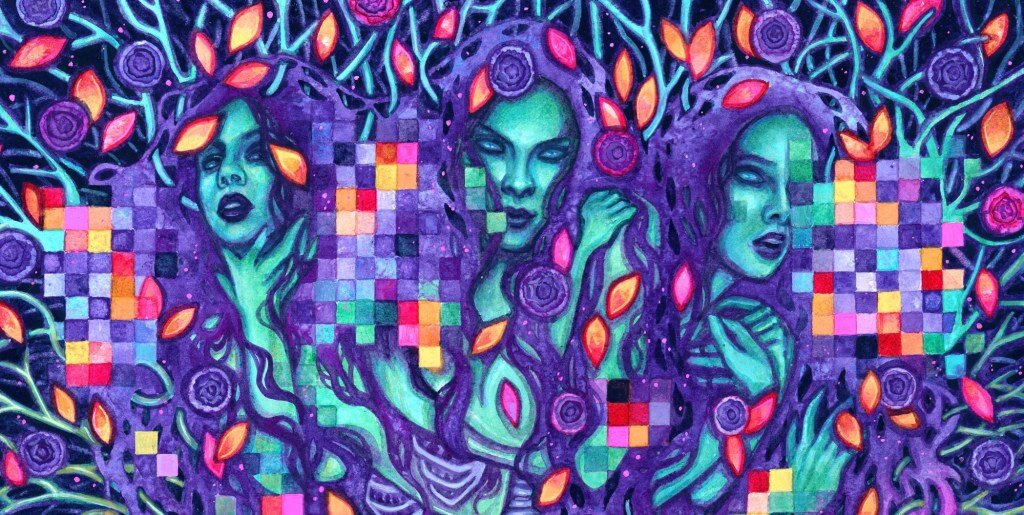The class action lawsuit by several visual artists against AI image and video generation platforms, including Stability AI, Midjourney, Runway, and DeviantArt, has progressed to the discovery phase. This critical phase mandates the disclosure of all relevant information, throwing a spotlight on the AI model training processes and datasets involved. The artists allege that these platforms engaged in copyright infringement by utilizing their artworks without proper authorization in training the AI models.
Led by Sarah Andersen, Kelly McKernan, Karla Ortiz, and other prominent artists, the lawsuit stands as one of the first major legal challenges against AI platforms, potentially setting a precedent for future cases in this domain. Notably, while some allegations were dismissed, the courts upheld the central copyright infringement claim, allowing the plaintiffs to proceed.
VentureBeat recently spoke with Kelly McKernan, one of the initial plaintiffs, regarding the implications and future steps in the case. McKernan expressed palpable relief and optimism, reflecting on the intensity and emotional weight carried by the plaintiffs throughout the pre-discovery phase. “We finally received the tentative order on the night before our hearing in San Francisco. It was a monumental moment, having collaborated closely with our lawyers for over a year,” McKernan shared.
Although some claims, like those under the Digital Millennium Copyright Act (DMCA), were dismissed, McKernan remains hopeful. The initial phase involved presenting a range of claims, with the copyright issue emerging as paramount. As the discovery phase unfolds, there is cautious optimism that deeper probing might reveal further evidence of the alleged infringement by AI platforms.
McKernan also highlighted the transparency issues surrounding AI training processes. She argued that the discovery phase might unveil significant insights, possibly proving that the training datasets do store and replicate artists’ works without authorization. Such revelations could pivot the case in favor of the plaintiffs.
The significance of this lawsuit extends beyond these individual claims. “Being part of the original plaintiffs, we always understood this case could be historic,” McKernan noted. The artist communities anticipate that the lawsuit will foster greater transparency and fairness, urging AI companies to adopt licensed content and ensuring artists are compensated adequately.
Moreover, the judicial order hinted at potential seismic shifts—if proven, these platforms might face stringent repercussions, leading to the dismantling of AI models violating copyright norms. This could usher in an era where AI model training fundamentally respects intellectual property rights.
Particularly intriguing is the Lanham Act claim against Midjourney, which might pioneer legal protections for artistic styles, an uncharted territory so far. For independent artists like McKernan, recognized for distinctive styles developed painstakingly over years, this could offer substantial protection against unauthorized mimicking by AI models.
McKernan voiced the struggles shared by many artists, exacerbated by AI-generated art’s rise, which threatens their livelihoods. Yet, her involvement in the case has also opened new avenues, including a teaching stint as an adjunct illustration professor, rekindling her passion for art sans the commercial pressure.
Interestingly, while the prospect of licensed AI models exists, McKernan remains skeptical about participating in such ecosystems. “Using the technology personally was my only interest. Sharing it broadly feels intrusive, even if compensated,” she admitted.
On the professional front, McKernan has already transitioned away from commercial tools like Adobe Illustrator to more artist-friendly platforms such as Procreate, reflecting a broader sentiment against current major software suites among artists embroiled in similar legal battles.
As the discovery phase commences, significant scrutiny will be on the AI platforms’ documentation and the communication records of the artists involved. This phase may yield critical evidence, possibly vindicating the artists comprehensively. Whatever the outcome, this lawsuit marks a pivotal moment in the intersection of technology, art, and law.


